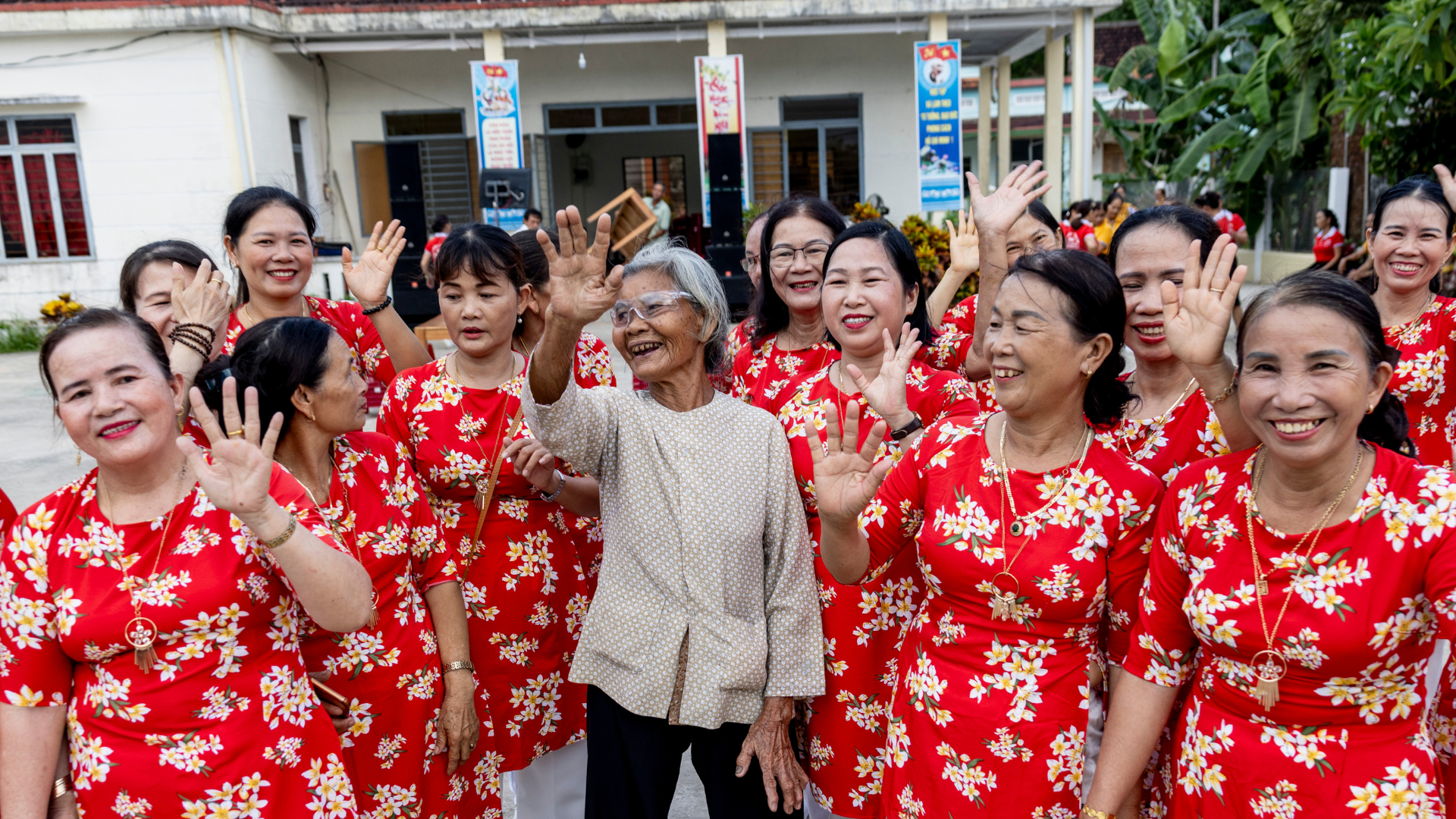Our work in Vietnam
Cataract causes 74% of blindness in people aged 50 years and over in Vietnam. In 2015, more than 400,000 were blind in Vietnam and 1.3 million people were visually impaired due to cataract.
Uncorrected refractive error is responsible for 10% of all visual impairment in people aged 50 and over in Vietnam. 25-40% of urban school children aged 6-15 years have refractive error while only 33.5% of school children with refractive error have glasses, and only 40% of those are likely to be the correct prescription.
6% of people aged 20-79 years in Vietnam have diabetes – approximately 3.5 million adults. Due to lack of research, the prevalence of diabetic retinopathy among people with diabetes is still unknown. However, global estimates suggest approximately one third of people with diabetes have some degree of diabetic retinopathy.
The prevalence of trachoma in Vietnam has gradually declined over the last 50 years due to the concerted efforts of the Ministry of Health and their partners. Since 1996, over 282,000 trichiasis surgeries have been completed in Vietnam.
Vietnam is now nearing the elimination of trachoma, with only 170,000 people now living in areas where trachoma is considered a public health risk.
In 1992, when Professor Fred Hollows, first visited Vietnam, only 50 cataract surgeries were being performed nationally per year by just two Vietnamese eye surgeons.
Later that year, just months before he passed away, Professor Fred Hollows returned to Vietnam with a team of ophthalmologists, supported by the Australian Aid program.
Over the next year, over 300 Vietnamese surgeons were trained on modern cataract surgical techniques. As of 2019, around 250,000 cataract surgeries are performed each year in Vietnam by more than 1,000 surgeons.
That is an amazing achievement for eye health in Vietnam and is a direct result of Professor Fred Hollows’ vision and commitment to equitable eye health for all.
The Fred Hollows Foundation will continue to build on these strong partnerships to further strive to achieve quality improvements for cataract and refraction services, trachoma elimination and equitable access to eye health for vulnerable groups including ethnic minorities, remote populations, people living with a disability, women and children.
The Foundation aknowledges the support of the Australian Government through the Australian NGO Cooperation Program (ANCP) within the Vietnam program.
Our achievements
Over the last 27 years, The Fred Hollows Foundation has supported the Vietnamese Government in developing a Comprehensive Eye Health model to strengthen eye health services across 20 provinces.
The Foundation has trained eye health workers, provided critical equipment and infrastructure development, and supported the delivery of more than 102,000 cataract surgeries.
Through nearly three decades of supporting the eye health sector in Vietnam, The Fred Hollows Foundation has developed and nurtured close relationships with key partners, including the Ministry of Health, the Vietnam National Eye Hospital, the Ophthalmology Association, key ophthalmic service providers, and international eye health non-governmental organizations.
The Foundation's Vietnam Country Strategy has four clear goals:
Goal 1: Effective cataract treatment is accessible to all in Vietnam
Goal 2: Effective refractive error prevention and treatment is accessible in Vietnam
Goal 3: Diabetic retinopathy can be prevented and detected early in Vietnam
Goal 4: Trachoma is eliminated in Vietnam
Our history in Vietnam
A year before his death, Professor Fred Hollows made a promise that would end up restoring sight to hundreds of thousands of people in Vietnam.
When he visited in the early 1990s, he found a team of keen eye surgeons who lacked the skills or equipment to undertake modern cataract surgery. Just months before his death, Fred returned to Vietnam to make good his promise to conduct the first training course for over 300 surgeons.
Sadly, Fred died before he could fulfil his other promise of providing surgical equipment and supplies. However, The Foundation fulfilled this on his behalf, and we’ve been working in Vietnam ever since. We have now trained more than 1000 surgeons and contributed to significantly reducing the backlog of people waiting for cataract surgery.
In 2023, The Foundation and its partners made great progress in key strategic areas in East Asia:
1,081,786
People screened.
106,050
Eye operations and treatments performed including cataract operations, surgeries to treat trachoma, diabetic retinopathy treatments and other sight saving or improving interventions.
72,687
Pairs of glasses distributed.
8,781
People trained including community health workers, surgeons, clinic support staff and teachers.
3,701,619
School children and community members educated in eye health and sanitation.
804
Facilities built, equipped or renovated.
The countries in Asia that The Foundation works in are Lao PDR, China, Vietnam, Cambodia, Philippines and Indonesia.
